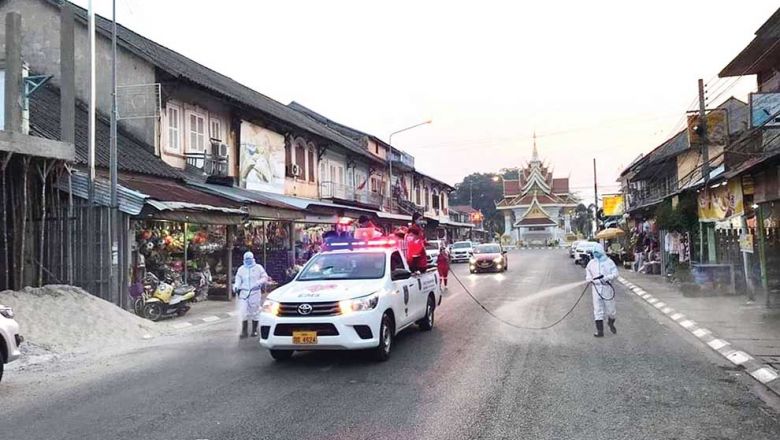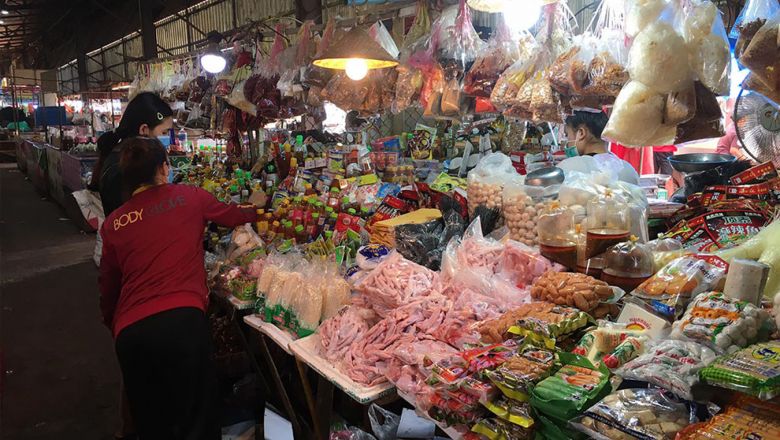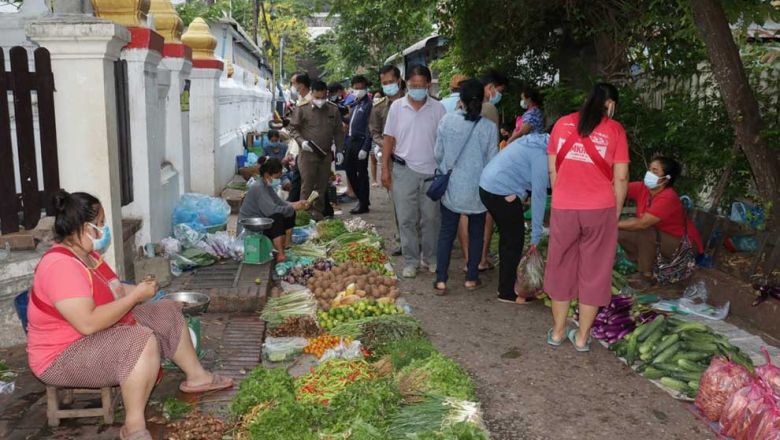Mekong bridge paves way for Luang Namtha-Myanmar trade
Mekong bridge paves way for Luang Namtha-Myanmar trade
Trade and transport between Luang Namtha province and Myanmar is set to increase dramatically when the Laos-Myanmar Friendship Bridge across the Mekong River opens in May.
The official opening of the bridge is slated for early May, with construction expected to be complete this month.
The two-lane bridge is 691.6 metres long and 10.9 metres wide. It links Thakhelek district in Myanmar's Shan State with Luang Namtha province in Laos, and can carry vehicles with a maximum weight of 75 tonnes.
The bridge is a joint investment by the Lao and Myanmar governments.
The new road link is expected to significantly boost trade, investment and tourism between the two neighbours, whose current volume of trade is low compared to that with other neighbouring countries.
The presence of the bridge and the increased traffic it will attract will also provide employment opportunities for local residents.
In fiscal year 2013-2014, Luang Namtha province earned about US$1.1 million from the sale of goods to Myanmar. This amount is expected to increase significantly this year, according to provincial industry and commerce officials.
The value of the province's exports to China was US$34 million, while US$33 million worth of goods was exported to Japan, US$1.3 million to Vietnam, and US$2.1 million to Thailand.
Most of the goods exported were wood products, notably furniture, as well as agricultural produce and mining products.
This fiscal year Luang Namtha province has set a total export target of over US$77.09 million (about 616.7 billion kip).
Meanwhile total imports should reach US$257.8 million, with the industry and commerce sector accounting for about US$9.15 million.
China and Thailand have historically been the province's main markets because private investors from those countries encouraged local people to grow crops for export to the two nations.
Agricultural exports include bananas, maize, rice and watermelons as well as forest products.
Most of Myanmar's trade has been with neighbouring countries due to political circumstances and poor infrastructure, but recent changes are likely to bring access to new markets. Oil and natural gas dominate Myanmar's exports.
Other exports include vegetables, wood, fish, clothing, rubber and fruits.
Myanmar mainly imports fuel, vegetable oil, vehicles, pharmaceutical products, construction equipment, polymers, tyres and machinery. Myanmar's main trading partners are China, India, Japan, Indonesia, and Germany.
Myanmar recorded a trade deficit of US$29 million in August 2014.
The balance of trade in Myanmar averaged -US$71 million from 2010 until 2014, reaching an all time high of US$593 million in August 2011 and a record low of -US$854 million in January 2014, the country's Central Statistics Organisation reported.

















